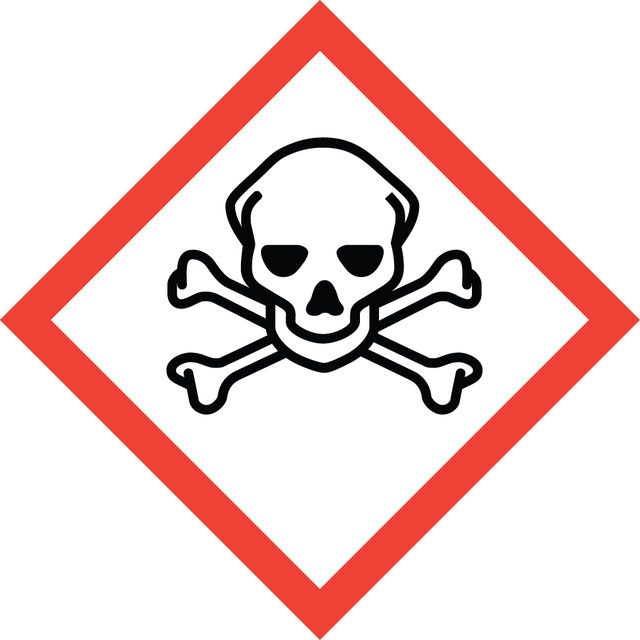Select a Size
About This Item
Product Name
Phalloidin, Fluorescein Isothiocyanate Labeled, sequence Amanita phalloides(synthetic: peptide sequence)
biological source
sequence from Amanita phalloides (synthetic: peptide sequence)
form
solid
fluorescence
λex 495 nm; λem 520 nm(lit.)
storage temp.
−20°C
Quality Level
Related Categories
Application
- To visualize F-Actin reorganization in primary neonatal cardiomyocytes (PNCMs) and H9C2 cells (rat cardiac myoblasts) following endothelin-1 (ET-1) and angiotensin II (Ang II) treatment.
- In immunochemistry to label microfilament.
- In immunofluorescence analysis to stain F-actin.
Biochem/physiol Actions
General description
signalword
Danger
hcodes
Hazard Classifications
Acute Tox. 2 Dermal - Acute Tox. 2 Inhalation - Acute Tox. 2 Oral
Storage Class
6.1A - Combustible acute toxic Cat. 1 and 2 / very toxic hazardous materials
wgk
WGK 3
flash_point_f
Not applicable
flash_point_c
Not applicable
Regulatory Information
Choose from one of the most recent versions:
Already Own This Product?
Find documentation for the products that you have recently purchased in the Document Library.
Which document(s) contains shelf-life or expiration date information for a given product?
If available for a given product, the recommended re-test date or the expiration date can be found on the Certificate of Analysis.
How do I get lot-specific information or a Certificate of Analysis?
The lot specific COA document can be found by entering the lot number above under the "Documents" section.
How do I find price and availability?
There are several ways to find pricing and availability for our products. Once you log onto our website, you will find the price and availability displayed on the product detail page. You can contact any of our Customer Sales and Service offices to receive a quote. USA customers: 1-800-325-3010 or view local office numbers.
What is the Department of Transportation shipping information for this product?
Transportation information can be found in Section 14 of the product's (M)SDS.To access the shipping information for this material, use the link on the product detail page for the product.
How do I dissolve Product P5282, Phalloidin, Fluorescein Isothiocyanate Labeled?
This product is soluble in methanol, ethanol, butanol and pyridine. It is soluble in cold water at a concentration of 5 mg/mL; it is much more soluble in hot water. See: The chemicals encyclopedia published by the Royal Society of Chemistry, 12th ed., entry# 7336 (1996). Solutions should be prepared fresh, and protected from light whenever possible.
How do I prepare stock solutions of Product P5282, Phalloidin, Fluorescein Isothiocyanate Labeled?
Stock solutions of phalloidin conjugates have been made in methanol or DMSO at 0.1 to 5 mg/mL. Make final dilutions in aqueous physiological buffers for a staining range from 0.1 μM to 100 μM with corresponding incubation times of 15 minutes to 72 hours.
What are the excitation and emission wavelengths used for fluorescent detection of Product P5282, Phalloidin, Fluorescein Isothiocyanate Labeled?
Excitation wavelengths of 540-545 nm and emission wavelengths of 570-573 nm can be used. See: Faulstich, H., J. Muscle Res. Cell Motility, 9, 370 (1988), and Waggoner, A. et al., Methods in Cell Biology, 30, 449 (1989).
How do I stain cells with Product P5282, Phalloidin, Fluorescein Isothiocyanate Labeled?
A typical application for staining cells can be found in the product information sheet (under Documents, above).
How do I store Product P5282, Phalloidin, Fluorescein Isothiocyanate Labeled?
The product should be stored at a powder in the freezer at -20°C.
My question is not addressed here, how can I contact Technical Service for assistance?
Ask a Scientist here.
Articles
In the midst of beeping lab timers, presentations and grant deadlines, it is easy to take for granted the quality of lab reagents.
在实验室计时器蜂鸣不止、报告和授权截止期限迫在眉睫时,很容易放松对实验室试剂质量的授权。
Related Content
Three-dimensional (3D) printing of biological tissue is rapidly becoming an integral part of tissue engineering.
Our team of scientists has experience in all areas of research including Life Science, Material Science, Chemical Synthesis, Chromatography, Analytical and many others.
Contact Technical Service